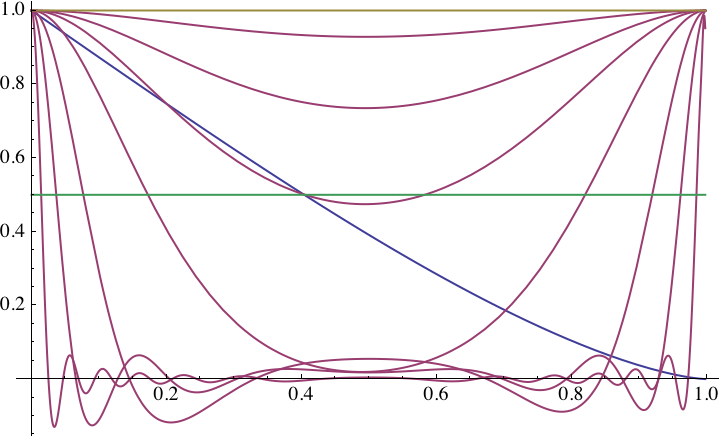Tom Axford
Forum Pro
I came across this quite recently while reading more about lens resolution in response to several other threads on this subject. The effect is apparently well-known to experts in lens optics, but I hadn't seen it before and thought it may be of interest to other readers of this forum.
It is totally counter-intuitive (to me, anyway), but easily demonstrated. Consider the "Siemens star" test object:

Now take a photograph of this object (the lens and camera shouldn't matter), but deliberately de-focus the image so that it is blurred:

The curious thing about this image is that as we move towards the centre, the number of line pairs per mm steadily increases, but the contrast of the line pairs decreases to zero, then increases again, then decreases to zero again, and so on! If you enlarge the image to full size, it can be seen that even the closest lines are resolved, yet these lines are much closer together than the size of the blur circle caused by de-focussing the lens.
[Mathematically, I think this is analogous to the "ringing" effect seen in the Fourier transform of any square waveform.]
It demonstrates rather effectively that measuring the resolution of line pairs may not always be a good measure of the resolution with respect to other details in the image (compare the resolution of the closest line pairs to that of the text at the top left which is illegible, despite being larger).
It is totally counter-intuitive (to me, anyway), but easily demonstrated. Consider the "Siemens star" test object:

Now take a photograph of this object (the lens and camera shouldn't matter), but deliberately de-focus the image so that it is blurred:

The curious thing about this image is that as we move towards the centre, the number of line pairs per mm steadily increases, but the contrast of the line pairs decreases to zero, then increases again, then decreases to zero again, and so on! If you enlarge the image to full size, it can be seen that even the closest lines are resolved, yet these lines are much closer together than the size of the blur circle caused by de-focussing the lens.
[Mathematically, I think this is analogous to the "ringing" effect seen in the Fourier transform of any square waveform.]
It demonstrates rather effectively that measuring the resolution of line pairs may not always be a good measure of the resolution with respect to other details in the image (compare the resolution of the closest line pairs to that of the text at the top left which is illegible, despite being larger).







